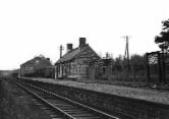
A SHORT HISTORY OF BINTON
The name Binton probably derives from Bina’s Ton (or town), Bina being a former Anglo-Saxon owner of the village.
Binton is unusual in that it has four entries in the Domesday Book of 1086. There were four major landholders named William, Gerin, Urso and Hugh. The total value of all their property was £8 and 10s, a lot of money at the time. Adding together the figures given gives an area of 1,538 acres (6 km2), whilst the modern parish is only 1,300 acres (5 km2). This is because some of the original manor is now in Temple Grafton parish. Therefore, according to the Domesday Book, in 1086, Binton had a population of 29 families with 150 people working seven ploughs and three mills. Altogether, this is very impressive for an eleventh-century manor.
Binton Manor was bought by Edward Viscount Conway of Ragley Hall in 1670 and the title remains in his family. In the 19th century, the Conways possessed most of the village and proceeded to build the present church in 1875, on the site of a much older one. A picture of the original church can be seen at the back of the current church. Between the Norman Conquest and the Conways' buying of the Manor, it had belonged to many different families. The Wyncote family held it for the longest period: from 1325 until 1531.
Agricultural activity appears to have continued down the centuries. In the 19th century, a rector of Binton, trying to raise money for the church, said that most of the inhabitants were agricultural workers and were therefore unable to contribute. He was obliged to ask the local gentry instead.
During that century Binton gained many new facilities. In addition to the church and rectory, in the main street, a school, a village shop, a post office, and a pub (The White Horse). There was a forge and, on the main Evesham Road, there was the railway station. The school, shop, post office, pub, forge and railway station unfortunately no longer exist. However, Bintons most noticeable feature is the ‘well’ which William Jackson and his wife, who lived in "Springback", now The Old Wellhouse lived. Jackson provided the stone wellhead known as “Buckwell” or “Lion’s Mouth" by piping water from a well in his own garden into the watering hole we now have.
There is a parish council. In local government, the village was put in Stratford Rural District Council at its inception in 1894, and then, 80 years later, was absorbed into the larger Stratford District, which is where it is today.
The name Binton probably derives from Bina’s Ton (or town), Bina being a former Anglo-Saxon owner of the village.
Binton is unusual in that it has four entries in the Domesday Book of 1086. There were four major landholders named William, Gerin, Urso and Hugh. The total value of all their property was £8 and 10s, a lot of money at the time. Adding together the figures given gives an area of 1,538 acres (6 km2), whilst the modern parish is only 1,300 acres (5 km2). This is because some of the original manor is now in Temple Grafton parish. Therefore, according to the Domesday Book, in 1086, Binton had a population of 29 families with 150 people working seven ploughs and three mills. Altogether, this is very impressive for an eleventh-century manor.
Binton Manor was bought by Edward Viscount Conway of Ragley Hall in 1670 and the title remains in his family. In the 19th century, the Conways possessed most of the village and proceeded to build the present church in 1875, on the site of a much older one. A picture of the original church can be seen at the back of the current church. Between the Norman Conquest and the Conways' buying of the Manor, it had belonged to many different families. The Wyncote family held it for the longest period: from 1325 until 1531.
Agricultural activity appears to have continued down the centuries. In the 19th century, a rector of Binton, trying to raise money for the church, said that most of the inhabitants were agricultural workers and were therefore unable to contribute. He was obliged to ask the local gentry instead.
During that century Binton gained many new facilities. In addition to the church and rectory, in the main street, a school, a village shop, a post office, and a pub (The White Horse). There was a forge and, on the main Evesham Road, there was the railway station. The school, shop, post office, pub, forge and railway station unfortunately no longer exist. However, Bintons most noticeable feature is the ‘well’ which William Jackson and his wife, who lived in "Springback", now The Old Wellhouse lived. Jackson provided the stone wellhead known as “Buckwell” or “Lion’s Mouth" by piping water from a well in his own garden into the watering hole we now have.
There is a parish council. In local government, the village was put in Stratford Rural District Council at its inception in 1894, and then, 80 years later, was absorbed into the larger Stratford District, which is where it is today.


